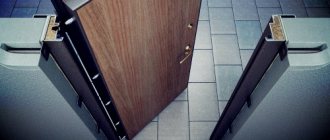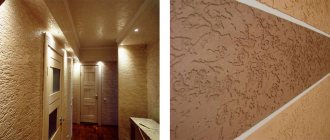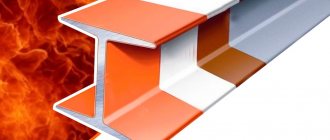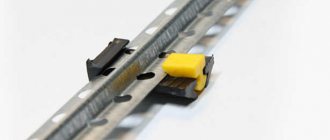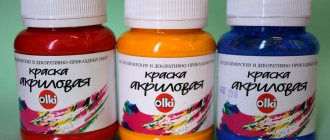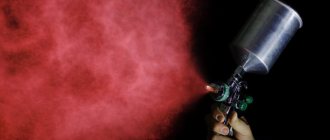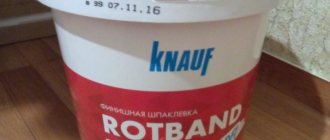SHARE ON SOCIAL NETWORKS
FacebookTwitterOkGoogle+PinterestVk
During installation and assembly of various parts made of polymers and metal-plastic, glue is often used. This is the best option when the presence of additional holes in the part makes the connection more vulnerable and susceptible to various influences. One of the best compositions is cyanoacrylate glue. This publication contains detailed information about this substance.
Cyacrine glue has the ability to glue even those surfaces that differ in quality and structure
Features of the composition
The main component of cyanoacrylate glue is alpha-cyanoacrylic acid. The technical characteristics of the adhesive mass depend on the texture of the ester substance.
To improve the properties of the glue, giving it heat resistance, better adhesion, water resistance, etc., modifying elements are added to the composition. Thus, glycerin and abietic acid give the mass greater vibration resistance.
The speed of setting, drying, and viscosity depend on the amount of stabilizers and thickeners.
Properties and technical specifications
The glue adheres to various materials, including galvanic and rubber surfaces. It exhibits inertness with many organic compounds - oils, alcohol, gasoline, etc.
The chemical composition can corrode mucous membranes, so do not neglect safety measures and protective equipment.
Specifications:
- Transparency, viscosity of a one-component composition. Produced in individual packages, sealed containers with an expiration date.
- Setting, hardening. The process should take place at room temperature, then it will go quickly. The presence of humidity speeds up the action.
- Working temperature. Cyanoacrylate-based adhesive serves at temperatures of -60 – +80 degrees. Short-term operation is permissible at -200 – +300 degrees, with preservation of properties.
View this publication on Instagram
Publication from Dmitry Anatolev (@dmitri_anatolev) June 15, 2021 at 10:38 PDT
Dried connections resist weather conditions and mechanical stress.
Violation of the tightness of the container contributes to the rapid use of glue, as this can lead to loss of properties.
Toxicity
Cyanoacrylate vapors, which are monomers, can irritate the mucous membranes of the eyes, nose and throat, but in sufficient concentration they instantly polymerize when exposed to moisture and become inert.
It is believed that the risk may be negligible if worked in a well-ventilated area. With regular exposure to cyanoacrylate, about 5% of people experience flu-like symptoms.
Cyanoacrylate may also irritate the skin and cause allergic skin reactions. In rare cases, inhalation of vapors may cause asthma. For different cyanoacrylates, toxicity can vary significantly.
Application area
The properties of the glue allow it to be used in various fields and industries:
- At home, the mass is capable of connecting all non-porous surfaces, including rubber, and insulating wires. For a stronger grip, you need to pay attention to the brand of the product.
- Industrial wire insulation. For this, universal products or SK brand Loctite 406 are used.
- In instrument making, parts are connected with glue and damage is repaired.
- The clothing industry uses glue to join fabric, leather, and foam materials.
- It is used in cosmetology for nail and eyelash extensions. But the mass must contain acrylic. In this case, applying the mass will not cause deformation of the nail and to remove it, it is enough to apply an organic solvent. Cyanoacrylate glue is also used by nail design artists.
Useful video on the topic:
Varieties
There are one-component and two-component formulations:
The first type is distinguished by the speed of hardening; a thin film-like layer is created that reliably holds objects together.
Secondary two-component compositions are often found in homes; liquid types can close gaps up to 0.5 millimeters, for this they must be slightly viscous. Can be used for gluing rubber, leather, and wood particles. A thinner consistency is suitable for hard surfaces.
The most transparent layers are used to work with glass as they allow you to create a completely invisible layer. Secondary species dry out from the existing humidity in the air; there is no need to create exposure to water.
An activator is required when environmental conditions are low in humidity and temperature. It is convenient if you need to close volumetric gaps.
Some activators can damage thermoplastic parts and varnished surfaces; they should be sprayed avoiding these areas.
There is a structural adhesive, it stands out for its strength, elastic properties, and stable heat resistance. Universal means can connect qualitatively different materials with each other.
Manufacturers
Among the many cyanoacrylic masses, the more common ones are highlighted:
- Pronto CA-4 is a universal product, ready for use. It has high viscosity.
- Interbond is a two-component cyanoacrylate adhesive used for joining chipboard, MDF, rubber, etc. The composition is moisture and heat resistant. Packaged in tubes of 20 and 100 ml. Fixation occurs within 5–7 seconds. During storage, direct sunlight on the packaging and strong changes in temperature are not allowed.
- Permabond 791 – suitable for joining flexible and rigid surfaces. Fixation occurs within 3–5 seconds. Due to its transparency, it is used for gluing glass products. The mass is liquid, which allows the product to disperse in the crevice spaces. Provides a waterproof connection.
- Cosmofen is a more common remedy among similar analogues. The manufacturer provides the market with universal and specialized formulations. The consumption is economical, which allows a small bottle to cover large areas. Once opened, the tube can be re-closed tightly and can be stored for up to a month.
- Kernil is a new product with the most durable effect. Often used in the repair of rubber boats, which ensures demand among fishermen.
Origin story
In 1942, for the needs of the American military industry, Eastman Kodak conducted research on creating transparent plastic for optical sights. Cyanoacrylates were considered as one of the options for this. However, they turned out to be unsuitable - under the influence of moisture, these compounds became sticky.
It took 16 long years to refine the recipe and production technology, and in 1958 Eastman 910 appeared on the market - the first cyanoacrylate adhesive for mass use. However, this composition did not immediately gain popularity. Two events saved the situation.
In one of the live TV shows, a metal cable descending from above and a metal rod were glued together within a few seconds using a few drops of the compound. This joint supported the weight of two grown men who stood up holding a rod above the stage.
Later, Eastman Kodak held a promotional event in which a truck crane used glue to lift a car off the street.
How to dissolve and dilute
Before work, you need to take responsibility for preparing the workplace, since there is a high probability of glue getting on a surface that does not need to be glued.
It must be remembered that without damaging the surface it will not be possible to remove or dissolve the dried mass; mechanical interventions will be required.
You can remove the composition from the surface with a sharp knife blade, but you must act carefully to avoid scratching the surface. The remaining material is wiped off with white spirit.
Cyanoacrylate
Cyanoacrylates are the main component of cyanoacrylate adhesives (97-99%), which are more commonly known as “superglues”.
Cyanoacrylate adhesives glue products made of rubber, plastic, metal, wood, leather, ceramics, ferrites, stone, cork, glass and paper. They allow the surfaces to be bonded to be aligned without compression, do not require heating and do not contain solvents.
Insoluble, weather-resistant. Curing time is a few seconds, but cyanoacrylates reach full strength after 24 hours. Tensile strength can reach 35 N/mm². Single-component. Shrinkage is insignificant. Can be successfully used in automated production.
The curing mechanism of cyanoacrylates is unique and does not require heating, the use of activating additives or solvents. Inside the container, cyanoacrylate adhesives are in a stable liquid state thanks to acid stabilizers that prevent polymerization of the adhesive molecules.
When applying glue to the surface to be bonded, the stabilizer is neutralized by the alkaline environment of the base or partially ionized water molecules present in the atmosphere.
During polymerization, cyanoacrylate adhesive changes from a liquid to a solid state. In this case, chains of glue molecules line up along the gluing plane, attract molecules of the material being glued to themselves and, connecting with each other, ensure adhesion of the bonded surfaces.
We offer cyanoacrylate adhesives from the world's leading manufacturers Chemence and Permabond .
Instant cyanoacrylate adhesive Chemence Krylex KB014
KRYLEX® KV014 is a modified ethyl cyanoacrylate adhesive with very fast curing and moderately low viscosity. Suitable for joining a wide range of materials, including acidic and porous surfaces where instant bonding is required. In containers of 20 g.
Instant action cyanoacrylate adhesive for rubber and plastic Chemence Krylex KB0114
KV0114 (Instant Superglue) is a cyanoacrylate adhesive with very fast fixation (10-30 s) of medium viscosity (100 cP) based on ethylene.
KV0114 glue provides the most durable and fastest connection of plastics and rubbers, but is also suitable for connecting a wide range of materials: paper, leather, wood, plastics, rubber, metals and other simple materials.
It is less dependent on surface moisture during polymerization than conventional cyanoacrylates. Recommended for use on tight, flat, bonded surfaces. Packaged in bottles of 20 g.
Black cyanoacrylate flexible adhesive with rubber filler KB1054
Krylex KB1054 adhesive is a very fast-curing, high-viscosity cyanoacrylate adhesive with a black rubber filler. This adhesive exhibits excellent peel strength and impact resistance. It is used when joining materials under conditions of vibration, temperature loads, thermal cycling and high humidity.
KV1054 adhesive is specially designed for a more flexible connection compared to conventional cyanoacrylates. It can be used at temperatures up to 105°C and has intermittent temperature resistance up to 125°C. KV1054 bonds a wide range of materials, including metals, plastics, rubbers, etc. In addition, KV1054 can be used on printed circuit boards to provide strain relief on large parts.
Low viscosity cyanoacrylate adhesive KB0614
KRYLEX ® KV0614 is a low viscosity ethyl cyanoacrylate adhesive. It is characterized by high curing speed and high strength of the connection of plastics and rubbers. KV0614 shows the best results on all types of plastics and rubbers when gluing together or with similar materials.
KB064 low viscosity cyanoacrylate adhesive
KRYLEX ® KV064 is specially designed for bonding absorbent or porous surfaces such as paper, wood and leather. This adhesive is also suitable for quickly joining a wide range of plastics, metals and rubbers.
C735 cyanoacrylate adhesive with black rubber filler
Permabond C735 is a new black cyanoacrylate adhesive with improved strength properties for maximum impact and peel strength.
C735 quickly connects various surfaces (aluminium, galvanized and non-galvanized steel, plastics, rubber). Due to its elasticity, this adhesive is ideal for surfaces made of heterogeneous or flexible materials.
C791 cyanoacrylate ultra-fast colorless glue
Colorless cyanoacrylate adhesive Permabond C791 very quickly joins a variety of materials: plastic, rubber, metals, leather, paper, cardboard.
This adhesive is indispensable for quick assembly operations, including the assembly of small parts. Due to its low viscosity, the adhesive penetrates perfectly into porous materials and can easily be applied after the assembly is completed. Bonding time for rubber - 2 s, plastic - 4 s, metal - 7 s. In containers of 20 g . www.vns.by
Tips and tricks
When making repairs with cyanoacrylate, you must strictly follow the instructions and safety rules. Work must be performed outdoors or in rooms with a functioning ventilation system.
The use of IZ products is required, as it is necessary to avoid contact of the product with the skin and mucous membranes.
Before starting to work with glue, you must carefully read the instructions, which are indicated on the individual packaging. In this case, it is necessary to comply with the rules and terms of storage of the product.
Ways to remove cyanoacrylate
It is difficult to dissolve cyanoacrylate mixture. Wash it with water, even with aggressive washing powder - an impossible task. You can’t scrub it with gasoline, alcohol, or especially water. Indeed, under their influence the composition only hardens even more.
It can only be safely removed with dimethylformamide or nitromethane. Other means will definitely not give the desired result.
Let's sum it up
Universal cyacrine glue was developed as a general purpose product. In Moscow it is sold in any hardware and household store. They effectively glue any materials: even those that are quite difficult to glue. The mixture is widely used even at the final stage of assembly.
Each package contains mandatory instructions. She is your main guide for the correct use of the composition. We invite you to watch a video review to clearly understand all the intricacies of working with cyanoacrylate:
Harm to human health
What harm can cyanoacrylate composition cause to health? Cotton, paper, and wool materials can cause a fire.
If the description of the glue contains permission for gluing cardboard and paper, then such cases are excluded, since a special composition has been selected.
When working with glue, harmful fumes are released that affect the kidneys and lungs. Only complete hardening will eliminate this danger, since the discharge will stop.
If kitchen utensils are glued together, you must remember that they are not allowed to be used for cooking afterwards.


